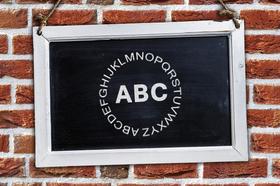So Many Choices
(Updated for 2025)
Choosing a private school for your child is one of the most significant decisions a family can make. The landscape of private education in the United States is changing—tuition levels are shifting, enrollment dynamics are evolving, and new programs and policies are influencing how families select schools. This article refreshes our earlier take with 2025 data, expert commentary, and real-world examples to help parents, students, and educators navigate “so many choices.”
1. The Big Picture: Tuition, Enrollment & Choice
Tuition Trends
In 2025, the cost of attending a private K-12 school remains highly variable. According to PrivateSchoolReview’s most recent figures, the national average private school tuition is about $14,999 per year for the 2025-26 school year, with elementary tuition averaging approximately $14,018, and high school tuition around $17,954.
Other sources point to a somewhat lower average—roughly $12,790 nationally—though with wide variability by region and type of school.
For example, in California the average private school tuition in 2025 is reported at $17,931 per year, with elementary at $17,293 and high school at $23,273. Private School Review
When boarding schools or highly selective independent schools come into play, costs can be far higher—day school peers report tuition above $30,000 in many cases, and boarding campuses commonly charge $55,000 to $70,000 + per year. Coursmos
Enrollment Trends
Enrollment growth in the private school sector continues, but the pace is moderating. A recent survey found that for the 2024-25 school year, 40 % of private schools reported enrollment increases, 32 % reported decreases, and 28 % no change.
Another market‐analysis piece noted that while private schools represent only about 10 % of all K–12 enrolment nationally (based on 2021 federal data), the advent of more robust choice programs is pointing toward growth.
Choice & Policy Context
One of the most significant shifts in recent years is the expansion of private school choice mechanisms—vouchers, tax‐credit scholarships, education savings accounts (ESAs)—which affect how families view private schooling. In states such as Florida and Arizona, more than 10 % of students now participate in private school choice programs. EdChoice
These developments are important for families to consider: schools that participate in choice programs often experience different dynamics in recruitment, cost structures, and demographics.
2. What “So Many Choices” Really Means for Families
When you begin exploring private schools, three major tensions surface: academics vs cost, mission/fit vs accessibility, and future readiness vs present comfort. Below are key considerations informed by 2025 insights.
Academic quality and specialization
Many private schools now emphasize specialized programs—STEM, global education, character/social-emotional learning, as well as smaller class sizes and individualized instruction. For instance, independent schools are increasingly using technology and data to shape admissions and retention, a shift noted in the latest reports.
When visiting schools, look beneath the brochure: What is the curriculum like? How many students go to top colleges? What extracurricular pathways are available? Does the school’s mission align with your child’s interests and values?
Financial considerations
Tuition is only part of the cost. Families should also factor in fees, uniforms, transportation, extracurriculars and potential tuition increases. Some schools offer robust financial aid packages—but with the rising cost environment, families should ask about typical increases, discounting policies, and long-term affordability.
In our 2025 context, for many families the question is no longer just “Can I afford this year?” but “Can we sustain this investment through graduation?” Schools that participate in choice/aid programs may have more flexibility—but also potentially more competition.
Mission, fit and community culture
The right private school is one where your child feels comfortable, challenged and supported. For many families, mission alignment matters: faith-based schools, Montessori or progressive schools, classical curricula, or arts-rich programs all provide distinct cultures.
2025 enrollment reports suggest that schools which clearly communicate their distinct culture and impact are better positioned to attract mission‐aligned students.
Future readiness
Beyond high school, families increasingly ask: Will this school prepare my child for a changing world? Schools that integrate technology, global awareness, character development and college readiness are emerging as preferred choices. Some schools now highlight data around “yield” (acceptance into top colleges), student wellbeing, and readiness for future careers.
3. Real-World Example: How a Family Might Navigate Choices in 2025
Consider the Taylor family in suburban Atlanta, whose daughter is entering 9th grade in fall 2025. Their priorities: strong STEM curriculum, moderate tuition, inclusive community, and college preparatory outcomes.
Step one: Set the budget.
With national averages around $14,000 – $18,000 and regional variation, the Taylors estimate they can afford up to $20,000 annually with financial aid potential.
Step two: Shortlist schools.
They identify three private schools in the region – one independent day school ($22,000 tuition), one faith-based day school ($15,000 tuition, solid STEM track), and one boarding/heavy residential hybrid ($45,000) they list as “stretch.”
Step three: Visit & ask questions.
During campus visits, they ask about retention rates, average class size, updates on technology integration, how the school is adapting post-pandemic, and whether the school participates in any choice/aid program.
Step four: Compare value propositions.
The mid-tuition faith‐based school offers a “choice scholarship” option (available in Georgia for independent schools). The independent day school commands higher cost but has more hands-on STEM labs and higher college matriculation rates. The boarding option is likely beyond their long-term budget.
Step five: Decision & alignment.
The Taylors select the faith-based day school, confident it offers the right balance of mission, cost, and programme. They also request early meetings about financial aid, budgets for increases and long-term planning.
This example illustrates how navigating private school choices in 2025 requires a mix of budget clarity, mission fit, programme quality and future planning.
4. 2025 Insights & Expert Quotes
Here are three key insights for families navigating private school selections this year:
“Private schooling continued to grow in 2024-25, but the pace of increase is decelerating. The post-pandemic surge is stabilizing.” — Cato Institute survey of private schools. Cato Institute
“Independent schools which clearly articulate their distinctive mission and leverage style="text-decoration-line: none;">
“The expansion of private school choice programs is shifting the market — families now consider private schooling not just as a niche option, but as a viable mainstream path.” — FutureEd analysis.
From a parent’s perspective: “We had so many private school open houses that we needed a spreadsheet to compare them all—curriculum, tuition, aid, transport, fit.… It felt overwhelming, but in the end we found a school where our child felt seen and excited about helping lead the robotics club.”
5. Key Questions to Ask Private Schools in 2025
When you meet with admissions staff, here are ten questions that reflect the 2025 landscape:
What has your tuition increase been over the past three years?
What percentage of students receive financial aid, and what is the average award?
How is your school leveraging technology and data to support student learning and admissions?
How many students matriculate into four-year colleges and which colleges?
What is your class size, teacher-student ratio and retention rate of faculty?
What extracurricular programmes or specializations (STEM, arts, global education, character) do you offer?
How would you describe your school’s community and culture—how do you support diversity and inclusion?
How are you adapting to changes in the private education market (for example, competition from alternative models, choice programmes)?
If applicable, do you participate in any state private school choice/voucher/ESA programme?
What are your policies for tuition increases, financial planning for families, and long-term commitments?
6. Final Thoughts
In 2025, the phrase “so many choices” has never been more accurate when it comes to private schooling. Families must navigate tuition landscapes that range from modest to steep, enrollment dynamics that reflect both opportunity and competition, and programme offerings that vary widely in mission and quality.
To make a confident choice:
Clarify your budget and long-term affordability.
Identify your child’s needs and the school’s mission alignment.
Visit multiple campuses, ask probing questions, and dig beneath the marketing.
Consider future readiness, not just present fit.
Use trusted review resources—start with listings and reviews on sites like Private School Review and Boarding School Review for deeper insight.
Choosing a private school isn’t about finding the “best” school in the abstract—it’s about finding the right school for your child, within your means, that will offer challenge, support and alignment over the coming years. With the updated 2025 insights above, you are better equipped to begin that important process.












